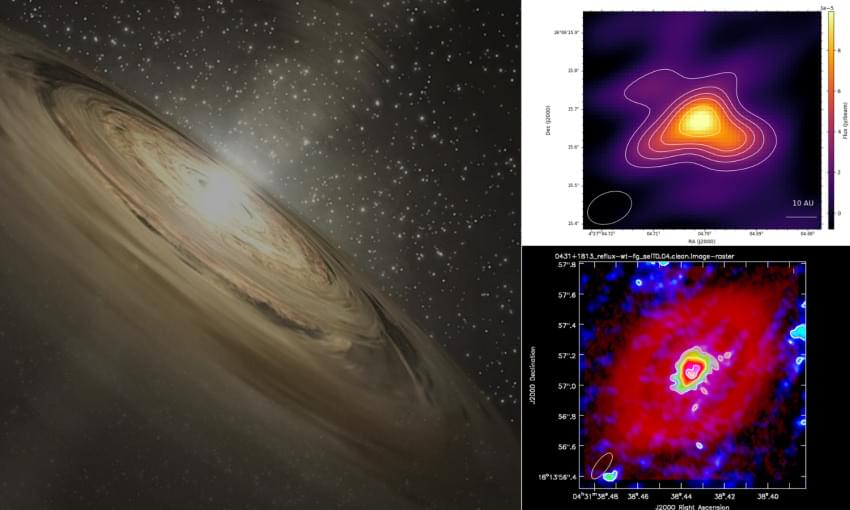Peter H. Diamandis
Get the latest international news and world events from around the world.

Rabi-like splitting arises from nonlinear interactions between magnons in synthetic antiferromagnet
Synthetic antiferromagnets are carefully engineered magnetic materials made up of alternating ferromagnetic layers with oppositely aligned magnetic moments, separated by a non-magnetic spacer. These materials can display interesting magnetization patterns, characterized by swift changes in the behavior of magnetic moments in response to external forces, such as radio frequency (RF) currents.
When the magnetization of each layer in synthetic antiferromagnets is disturbed by an external force, its magnetic moments start to “precess,” or in other words, to rotate around their equilibrium direction. Past studies have identified two primary collective spin oscillation modes in synthetic antiferromagnets, influencing how magnetic moments precess.
The first is the acoustic mode, characterized by the synchronized rotation of ferromagnetic layers in the same direction and phase. The second is the optical mode, in which ferromagnetic layers rotate in opposite directions (i.e., with one layer’s magnetization tipping up and the other down).

Protein aggregation is linked to altered RNA processing
Neurodegenerative disorders, such as Alzheimer’s disease and Parkinson’s disease, are devastating and incurable diseases. Although many neurodegenerative diseases are characterized by abnormal protein aggregation in the brain, a limited understanding of whether and how aggregated proteins cause brain cell dysfunction and death represents a major barrier to developing effective treatments.
Inspired by similar approaches in cardiovascular disease and cancer, the researchers focused on rare genetic forms of neurodegeneration as a powerful way to uncover fundamental mechanisms tying protein aggregation to brain disease. Thier work unexpectedly linked protein aggregation in genetic forms of neurodegeneration to disrupted processing of transfer RNAs (tRNAs), revealing an important mechanism that might be therapeutically targeted in these disorders.
The authors were interested in genetic forms of neurodegeneration caused by GGC trinucleotide repeat expansions (DNA sequence mutations caused by copying this 3-letter sequence too many times in a row). These mutations produce aggregation-prone proteins with long stretches of a single repeated amino acid (glycine).
Reversing The Age-Related DHEA-S Decline: Cholesterol, Gut Bacteria
Join us on Patreon! https://www.patreon.com/MichaelLustgartenPhD
Discount Links/Affiliates:
Blood testing (where I get the majority of my labs): https://www.ultalabtests.com/partners/michaellustgarten.
At-Home Metabolomics: https://www.iollo.com?ref=michael-lustgarten.
Use Code: CONQUERAGING At Checkout.
Clearly Filtered Water Filter: https://get.aspr.app/SHoPY
Epigenetic, Telomere Testing: https://trudiagnostic.com/?irclickid=U-s3Ii2r7xyIU-LSYLyQdQ6…M0&irgwc=1
Use Code: CONQUERAGING
NAD+ Quantification: https://www.jinfiniti.com/intracellular-nad-test/


Astronomers Catch Planets in the Act of Being Born
Astronomers have spotted centimeter-sized “pebbles” swirling around two infant stars 450 light-years away, revealing the raw ingredients of planets already stretching to Neptune-like orbits. Using the UK’s eMERLIN radio array, the PEBBLeS project found these rocky seeds in unprecedented detail, bridging the elusive gap between dusty discs and fully-formed worlds. The discovery hints that systems even larger than our own could be commonplace and sets the stage for the upcoming Square Kilometre Array to map hundreds more planetary nurseries.
A fascinating glimpse into how a solar system like our own is born has been revealed with the detection of planet-forming ‘pebbles’ around two young stars.
These seeds to make new worlds are thought to gradually clump together over time, in much the same way Jupiter was first created 4.5 billion years ago, followed by Saturn, Uranus, Neptune, Mercury, Venus, Earth and Mars.

Before the Big Bang — What Came Before Time?
Join us as we journey beyond the birth of the universe to unravel the mysteries of what might have preceded the Big Bang—and whether time itself had a beginning.
Watch my exclusive video Mass Drivers on the Moon: https://nebula.tv/videos/isaacarthur–…
Get Nebula using my link for 40% off an annual subscription: https://go.nebula.tv/isaacarthur.
Get a Lifetime Membership to Nebula for only $300: https://go.nebula.tv/lifetime?ref=isa…
Use the link https://gift.nebula.tv/isaacarthur to give a year of Nebula to a friend for just $36.
Visit our Website: http://www.isaacarthur.net.
Join Nebula: https://go.nebula.tv/isaacarthur.
Support us on Patreon: / isaacarthur.
Support us on Subscribestar: https://www.subscribestar.com/isaac-a…
Facebook Group: / 1583992725237264
Reddit: / isaacarthur.
Twitter: / isaac_a_arthur on Twitter and RT our future content.
SFIA Discord Server: / discord.
Credits:
Before the Big Bang — What Came Before Time?
Episode 738; July 20, 2025
Written, Produced & Narrated by: Isaac Arthur.
Select imagery/video supplied by Getty Images.
Music Courtesy of Epidemic Sound http://epidemicsound.com/creator.
0:00 Intro Asking the Impossible.
2:08 The Limits of Time and Spacetime.
7:45 Beyond the Big Bang: Alternate Beginnings.
14:38 Other Realities: Higher Dimensions and Shadow Universes.
18:28 Emergent Time.
22:38 Bubble Collisions and Multiverse Scars.
24:44 Conclusion: What Came Before Time?
Levin Λ Friston Λ Fields: “Meta” Hard Problem of Consciousness
Karl Friston, Michael Levin, and Chris Field sit down for an epochal conversation on cognition and consciousness.
Sponsor: Brilliant: https://brilliant.org/TOE for 20% off.
Patreon: https://patreon.com/curtjaimungal.
Crypto: https://tinyurl.com/cryptoTOE
PayPal: https://tinyurl.com/paypalTOE
Twitter: https://twitter.com/TOEwithCurt.
Discord Invite: https://discord.com/invite/kBcnfNVwqs.
iTunes: https://podcasts.apple.com/ca/podcast/better-left-unsaid-wit…1521758802
Pandora: https://pdora.co/33b9lfP
Spotify: https://open.spotify.com/show/4gL14b92xAErofYQA7bU4e.
Subreddit r/TheoriesOfEverything: https://reddit.com/r/theoriesofeverything.
Merch: https://tinyurl.com/TOEmerch.
CORRECTION:
- Chris Fields emailed me the following: “I referred to Peter Strawson when I meant to refer to his son, Galen Strawson, who has done the work on panpsychism.”
LINKS MENTIONED:
- Curt’s AMA #:3 https://youtu.be/SX9q2D6b5bc.
- Karl Friston #2: https://youtu.be/SWtFU1Lit3M
- Karl Friston #1: https://youtu.be/2v7LBABwZKA
- Michael Levin: https://youtu.be/Z0TNfysTazc.
TIMESTAMPS:
00:00:00 Introduction.
00:03:20 Michael Levin answers: “What do you respect about Chris / Karl?“
00:04:45 Chris Fields answers: “What do you respect about Michael / Karl?“
00:05:45 Karl Friston answers: “What do you respect about Chris / Michael?“
00:07:46 Self organization / Autopoiesis / Why does life form?
00:12:11 How does cognition emerge from smaller parts?
00:14:18 Why do we see “things” independent from one another? Why in space / time?
00:18:40 Relationship between cognition and consciousness.
00:22:03 The Meta Hard Problem.
00:30:37 Why is complexity associated with “awareness”?
00:35:56 Is society one large brain, with each person acting as a neuron?
00:44:17 Duality between: Did you act on the world? Or did the world act on you?
00:51:32 Babbling, and becoming a “self“
01:11:22 “300 milliseconds” is a special unit of time for consciousness.
01:15:49 Quantum Babbling.
01:21:49 The difference between “randomness” and “quantum randomness“
01:30:03 The difference between “external” and “internal” are both real and illusory.
01:33:41 Studying consciousness / the self and the concomitant existential dread.
01:48:19 Michael Levin: “Something important goes all the way down“
01:51:12 Science starts with faith.
